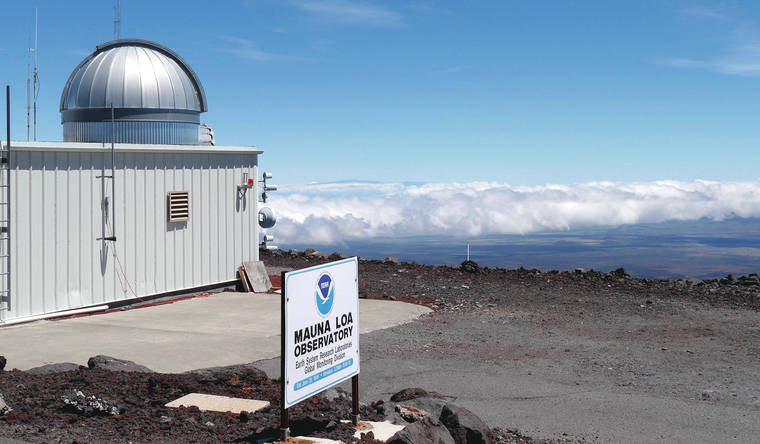The annual peak of global heat-trapping carbon dioxide in the air has reached another dangerous milestone: 50% higher than when the industrial age began.
And the average rate of increase is faster than ever, scientists reported Monday.
The National Oceanic and Atmospheric Administration said the average carbon dioxide level for May was 419.13 parts per million. That’s 1.82 parts per million higher than May 2020 and 50% higher than the stable pre-industrial levels of 280 parts per million, said NOAA climate scientist Pieter Tans.
Carbon dioxide levels peak every May just before plant life in the Northern Hemisphere blossoms, sucking some of that carbon out of the atmosphere and into flowers, leaves, seeds and stems. The reprieve is temporary, though, because emissions of carbon dioxide from burning coal, oil and natural gas for transportation and electricity far exceed what plants can take in, pushing greenhouse gas levels to new records every year.
“Reaching 50% higher carbon dioxide than preindustrial is really setting a new benchmark and not in a good way,” said Cornell University climate scientist Natalie Mahowald, who wasn’t part of the research. “If we want to avoid the worst consequences of climate change, we need to work much harder to cut carbon dioxide emissions and right away.”
Climate change does more than increase temperatures. It makes extreme weather worse and more frequent and causes oceans to rise and get more acidic, studies show.
There are also health effects, including heat deaths and increased pollen. In 2015, countries signed the Paris agreement to try to keep climate change to below what’s considered dangerous levels.
The one-year jump in carbon dioxide was not a record, mainly because of a La Nina weather pattern, when parts of the Pacific temporarily cool, said Scripps Institution of Oceanography geochemist Ralph Keeling. Keeling’s father started the monitoring of carbon dioxide on top of the Hawaiian mountain Mauna Loa in 1958, and he has continued the work of charting the now famous Keeling Curve.
Scripps, which calculates the numbers slightly differently based on time and averaging, said the peak in May was 418.9.
The 10-year average rate of increase also set a record, now up to 2.4 parts per million per year.

